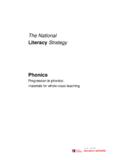Transcription of Colloquial Japanese: The Complete Course for …
1 Colloquial japanese The Colloquial Series Series Adviser: Gary King The following languages are available in the Colloquial series: Afrikaans * japanese Albanian Korean Amharic Latvian Arabic (Levantine) Lithuanian Arabic of Egypt Malay Arabic of the Gulf and Mongolian Saudi Arabia Norwegian Basque Panjabi Bulgarian Persian * Cambodian Polish * Cantonese Portuguese * Chinese Portuguese of Brazil Croatian and Serbian Romanian Czech Russian Danish Scottish Gaelic Dutch Slovak Estonian Slovene Finnish Somali French * Spanish German Spanish of Latin America Greek Swedish Gujarati * Thai Hindi Turkish Hungarian Ukrainian Icelandic Urdu Indonesian * Vietnamese Italian Welsh Accompanying cassette(s) (*and CDs) are available for the above titles. They can be ordered through your bookseller, or send payment with order to Taylor & Francis/Routledge Ltd, ITPS, Cheriton House, North Way, Andover, Hants SP10 5BE, UK, or to Routledge Inc, 29 West 35th Street, New York NY 10001, USA.
2 Colloquial CD-ROMs Multimedia Language Courses Available in: Chinese, French, Portuguese and Spanish Colloquial japanese The Complete Course for Beginners Second edition Hugh Clarke and Motoko Hamamura First published 2003. by Routledge 11 New Fetter Lane, London EC4P 4EE. Simultaneously published in the USA and Canada by Routledge 29 West 35th Street, New York, NY 10001. This edition published in the Taylor & Francis e-Library, 2005. To purchase your own copy of this or any of Taylor & Francis or Routledge's collection of thousands of eBooks please go to . Routledge is an imprint of the Taylor & Francis Group 2003 Hugh Clarke and Motoko Hamamura Typeset in Times New Roman by Newgen Imaging Systems (P) Ltd, Chennai, India Printed and bound in Great Britain by TJ International Ltd, Padstow, Cornwall All rights reserved.
3 No part of this book may be reprinted or reproduced or utilised in any form or by any electronic, mechanical, or other means, now known or hereafter invented, including photocopying and recording, or in any information storage or retrieval system, without permission in writing from the publishers. British Library Cataloguing in Publication Data A catalogue record for this book is available from the British Library Library of Congress Cataloging in Publication Data A catalog record for this book has been requested ISBN 0-415-19478-4 (Book). 0-415-27911-9 (CDs). 0-415-19479-2 (Tapes). 0-415-19480-6 (Pack). ISBN 0-203-98691-1 Master e-book ISBN. Contents Preface vii Introduction to the japanese language 1. 1 Meishi no kookan 11. Exchanging business cards 2 Jiko-shookai 28. Introducing yourself 3 K zoku no hanashi 41.
4 Talking about families 4 Kaimono 58. Shopping 5 . 75. Getsuy obi ni aimash o. Let's meet on Monday! 6 .. 90. Suzuki san no kaisha e d o yatte ikim su ka. How do I get to your office, Mr Suzuki? 7 111. D nna kanji no hito d su ka. What does he look like? 8 130. Shinai-k nkoo ni ikimash o. Let's take the city tour! 9 H teru de 145. At the hotel 10 160. Keiba o m ni ikimas n ka. Would you like to come to the races? vi 11 . 178. Nih n ni ik nara, d no k setsu ga i deshoo ka. If you're going to Japan, which is the best season? 12 193. D omo kaze o hiita y o desu. Somehow I seem to have caught a cold. 13 . 211. Kuruma ni butsukerareta. Another car ran into me! 14 . 229. M shimoshi, Akimoto sensei irasshaim su desh o ka. Hello, may I speak to Professor Akimoto? 15 248. Jootatsu no hiketsu wa kore desu. The secret road to progress!
5 Key to the exercises 258. Grammar summary 289. Appendix: hirag na, katak na and kanji 306. japanese English glossary 312. Index of grammar and language functions 383. Preface In this completely new edition of Colloquial japanese , we have integrated the writing system into the Course from Unit 1. This has resulted in the unusual, dare we say unique, feature of combining roman- ised transcription and the japanese script in the first five units. Instead of learning hirag na and katak na syllabaries mechanically by rote before embarking on your study of japanese , running the risk of losing your enthusiasm before you have begun, you are introduced gradually to the japanese writing system as you acquire useful phrases and expressions you can use immediately. From the beginning we introduce the three components of the japanese script kanji, hirag na and katak na within a context of partly romanised, natural spoken japanese .
6 We hope this innovation will help you learn how to read and write japanese as quickly and painlessly as possible. From Unit 6 the basic conversations and dialogues are given in kana and a restricted number of kanji. Students who apply themselves diligently to the study of the japanese script should be able to learn the 200 kanji introduced in the fifteen units. For those who cannot afford the time to master all the kanji, however, it will be possible to Complete the Course with a knowledge of the script introduced in the first seven units. In addition to the introduction of the japanese script, the new edition adopts a more interactive, communicative approach to the learning of japanese . The language is introduced through a series of practical dia- logues simulating the actual situations a learner of japanese is likely to encounter.
7 We have been careful, however, not to sacrifice the compre- hensive coverage of grammar and vocabulary which were the hallmarks of earlier editions of Colloquial japanese . We have received encouragement and advice from many friends and colleagues, too numerous to mention here. We are particularly grateful to our copy editor, Diane Stafford, whose excellent command of japanese and meticulous eye for detail has purged the manuscript of many typographical errors and inconsistencies. Special thanks must also go to viii our editors Sophie Oliver and James Folan of Routledge, whose patience and understanding encouraged us to go on when it seemed at times we would never finish the manuscript. We hope their faith in us will be rewarded with this volume. Hugh Clarke and Motoko Hamamura May 2001. Introduction to the japanese language japanese , with over 127 million speakers in Japan, large emigrant communities in North and South America and a rapidly growing body of fluent non-native speakers, is one of the world's major languages.
8 Out- side the languages of Europe, it is probably the most studied foreign lan- guage, with about a million learners in China, a similar number in Korea and around 300,000 in Australia and New Zealand. It is the most studied foreign language in Australian secondary schools and is now also becoming very popular in Britain and America. Japan is the world's second-largest economy, a major provider of foreign aid and a signifi- cant force in world affairs, particularly in Asia. It has a rich, distinctive culture combining native elements with influences from the Asian mainland and, more recently, from Europe and America. A fascinating blend of tradition and modernity, Japan has a literary tradition extending back 1,200 years, yet is one of the most modern, some would say post- modern, high-tech, post-industrial societies in the world.
9 The japanese language is the key to understanding japanese culture and society. Studying japanese can be a very rewarding experience in its own right, but, more important, it has great practical value for anyone wishing to do business with the japanese or planning to visit Japan. Pronunciation and romanisation japanese has a relatively simple sound system. It does not have a strong stress accent as we have in English, preferring instead to use high and low pitch contrasts to mark the boundaries between phrases. For practical purposes, you will find that you can produce natural- sounding japanese by giving each syllable equal stress and prominence (loudness). 2. Romanisation The romanisation used in this book is a modification of the Hepburn system which is the most practical for speakers of English. We have indicated long vowels by writing the short vowel twice, oo, uu, etc.
10 The acute accent has been added to indicate the pitch accent. The follow- ing descriptions of japanese sounds are approximations based on the pronunciation of south-eastern British English. The vowels japanese has five short vowels a, e, i, o, u and five long vowels roman- ised here aa, ee, ii, oo and uu. The short vowels are all the same length, very short and crisp, giving japanese its characteristic staccato rhythm. a like the u in cut e like the e in get i like the i in hit o like the au in taught but shorter, like the o in hot u like the u in put but without the lip-rounding (pull the corners of your mouth back slightly when you pronounce this vowel). The long vowels, indicated by double letters in our romanisation, are exactly the same sounds as their short counterparts, but are given twice the duration.


